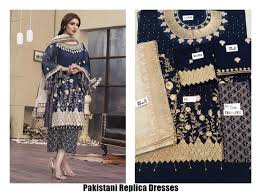Quality designer replicas will take a trained eye and knowledge of several things. According to the International Trademark Association (INTA), more than $1.2 trillion worth global counterfeiting industry, ranges from cheap knockoffs of poor quality to sophisticated design “mirror” that is almost impossible for most people and experts differentiate with genuine products depending on country restrictions or patents constraints. To differentiate between the good, bad and excellent replicas; you will need to check materials used, brand value & pricing.
Price is the very first sign of quality. A high-end duo of designer knockoffs, think a Louis Vuitton bag will run you anywhere from $150 – $300 and your cheaper-tier knockoff can be less than fifty dollars. Named as Loewe and Louis Vuitton at a higher price is due to using better materials, fine stitching right detailing. Higher quality replicas are often made with real leather and hardware as close to the original design as they can get, while When you start getting into your cheaper knock-offs along plastic-like zippers and faux-leather.
But instead, the quality of materials matters. On premium replicas, real materials are generally used from the same places sourced for original brands to match exactly with texture and weight as well. For instance, a well-made imitation of a Burberry trench will have the same gabardine fabric and be able to withstand rain. Even just feeling that fabric, holding the weight in your hands and looking at how it was stitched is enough to know you have a better copy than most.
A craftsmanship is another important factor. Loose stitching and off-center logos are often an obvious sign that the product is fake, according to industry insiders. You are look for things like clean, precise stitching and no loose ends — two characteristics of good replicas. When it comes to a quality Gucci replica, for example, the stitching should be consistent throughout all edges and there is no way those buckles can fall of.

It tells us a lot if nothing else, this focus on the minutia of branding. Fake designer brands are slip-shod when it comes to the detail in their logo, fonts and placement. All the more expensive replicasa concern themselves with getting those looking as authentically close matching typeface, size and colour to original logo. When a replica is held next to the real product, imperfections show up that appear in font sharpness or alignment and spacing difference which can help even if its being well made.
Crowd Packaging Tells a Story also While bad copies come in plain packaging or muddled COA replicas with flimsy boxes (or not at all, authentic ones pay attention to reproducing the original presentation. Again, this means clones are so detailed that some even come with dust bags or authenticity cards and branded tissue paper as the original might actually have had.
You can assess quality by checking reviews, sourcing information. In some cases, such as sellers with previous reviews from re-buying customers and others that go into detail about the manufacturing process are likely to produce a higher quality replica. An online business community like DHgate — which youalready know has 20 million buyers in over 221 countries aroundthe globe, available for reference and review when attempting toascertain the basis of regularity with any seller before buying. Always check previous buyers images and read the feedbacks about the material, fit!
The color accuracy in fabrics and metals is a good indicator one can also observe. Imitations suffer the most from copying an identical tone, especially when it comes to brands like Chanel or Hermès (which have their own colors defined by Pantone). Thanks to high-end replicas, the exact vibrancy will remain everywhere you take it.
Consumers favourite type of replica models include these venues to avoid wasting their cash on sub par clothing designer replicas.